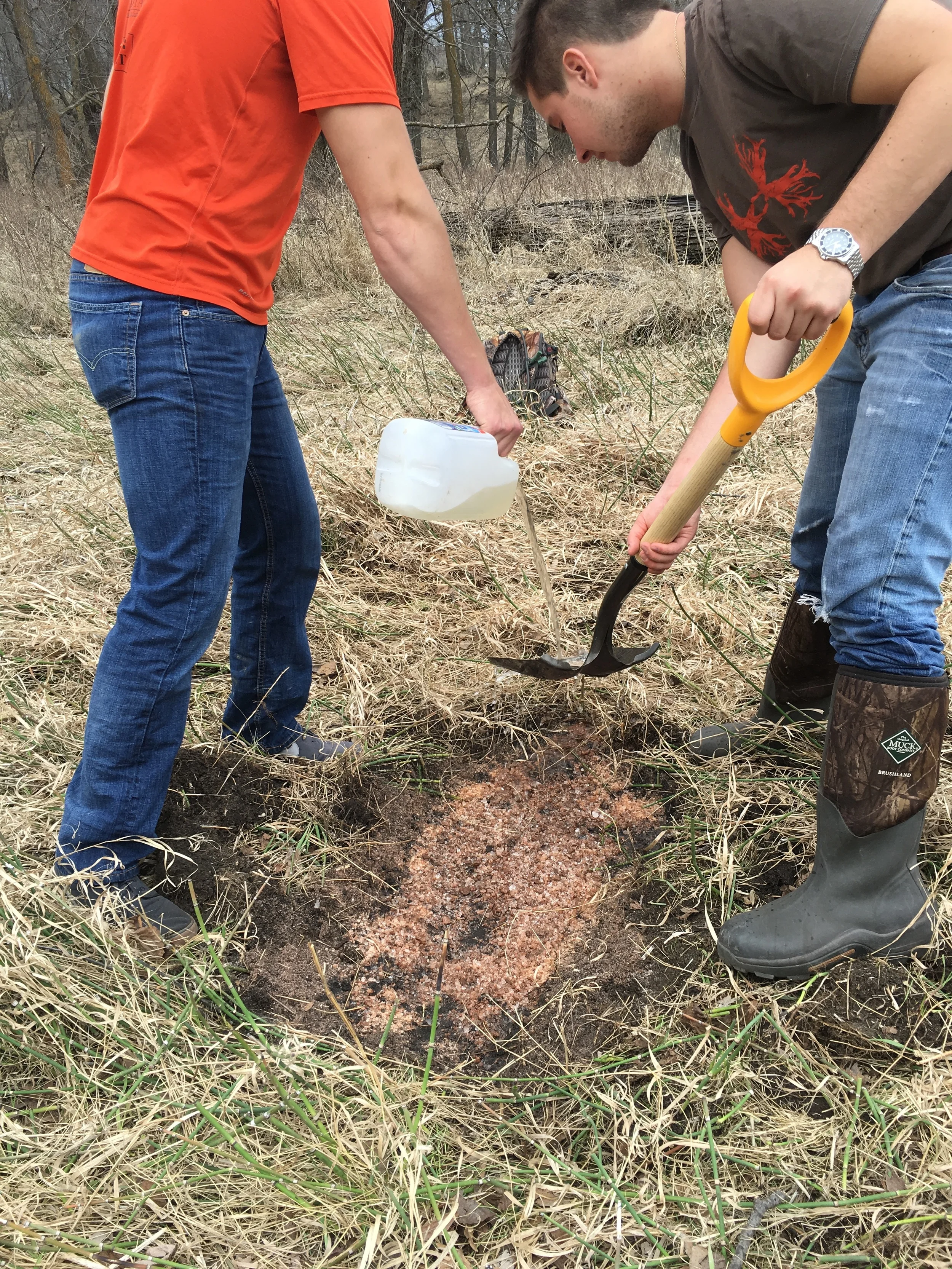It's April, deer hunting isn't for at least another five months, so I can relax while I wait for it to turn fall right? Wrong, spring is one of the most important times of the year when thinking of next fall and connecting on a mature buck. Sure, everyone, or at least a fair majority of people shed hunt and turkey hunt this time of year. The rise of shed hunting in the last decade has kicked spring scouting to the back seat. So what do I find important about the spring besides finding antlers?
A good size scrape near a cluster of rubs
Sign, most people know what to look for when looking for sign. But what you do with the information is what sets the consistent big buck hunters from the rest. There are three main types of sign I'm looking for, and applying them all to different types of the year for next fall.
A high traffic area leading to a food source
Trails - Where I do most of my hunting, in North Dakota and Nebraska, I'm mainly hunting around agriculture fields like most people in the Midwest. In the spring, you can clearly see deer trails that were frequented last fall. If they were frequented then, they most likely will next year as well. I combine this information with where I know food sources will be, and combine that to find areas that might be well suited for a stand. If you can find areas where a multitude of trails come together near a food source, it can be a dynamite early season setup.
Rut Sign - Rubs and scrapes, they get everyone excited right? You see a big rub or a scrape the size of a buick and you mark a tree near the sign to put a stand in for next year. That's not exactly how it should play out. During the spring, actively searching out these areas can be critical, but it isn't as simple as hunting on top of the sign. What I like to do it mark every single rub, scrape, etc. on some type of GPS app on my phone (scoutlook is a great option here). After marking all this, I go home and pull up google earth and have it zoomed out quite a ways. You then can visually see where all of the sign took place and figure out why the sign was there. For example, you may have noticed a bunch of rubs within fifty yards of each other and they were facing different ways, so it never occurred to you it may be the same buck. When looking at all of these plotted point on google earth you can see things, like maybe the rubs were all within between a food source and some type of edge. This is a good indication that this area is where a buck was staging in late October, and would be a spot to have your eye on next fall.
So you went shed hunting, and then found some killer early season and rut spots. But what about late season? How do you know what will produce at the end of the year during crunch time? You already have the answer (hopefully). Where you found your shed antlers will tell you where the deer are hanging out in the late season. I sometimes will have a few buddies who tell me they found like six sheds in a half hour walk and then go on to talk about how they're gonna be the first one to tag out the following year. Just because they found shed antlers there, doesn't mean that is where the bucks spend their time in the early season.
Combine all the information you find, and go make next fall the best hunting season you've ever had!
-Alex Comstock














